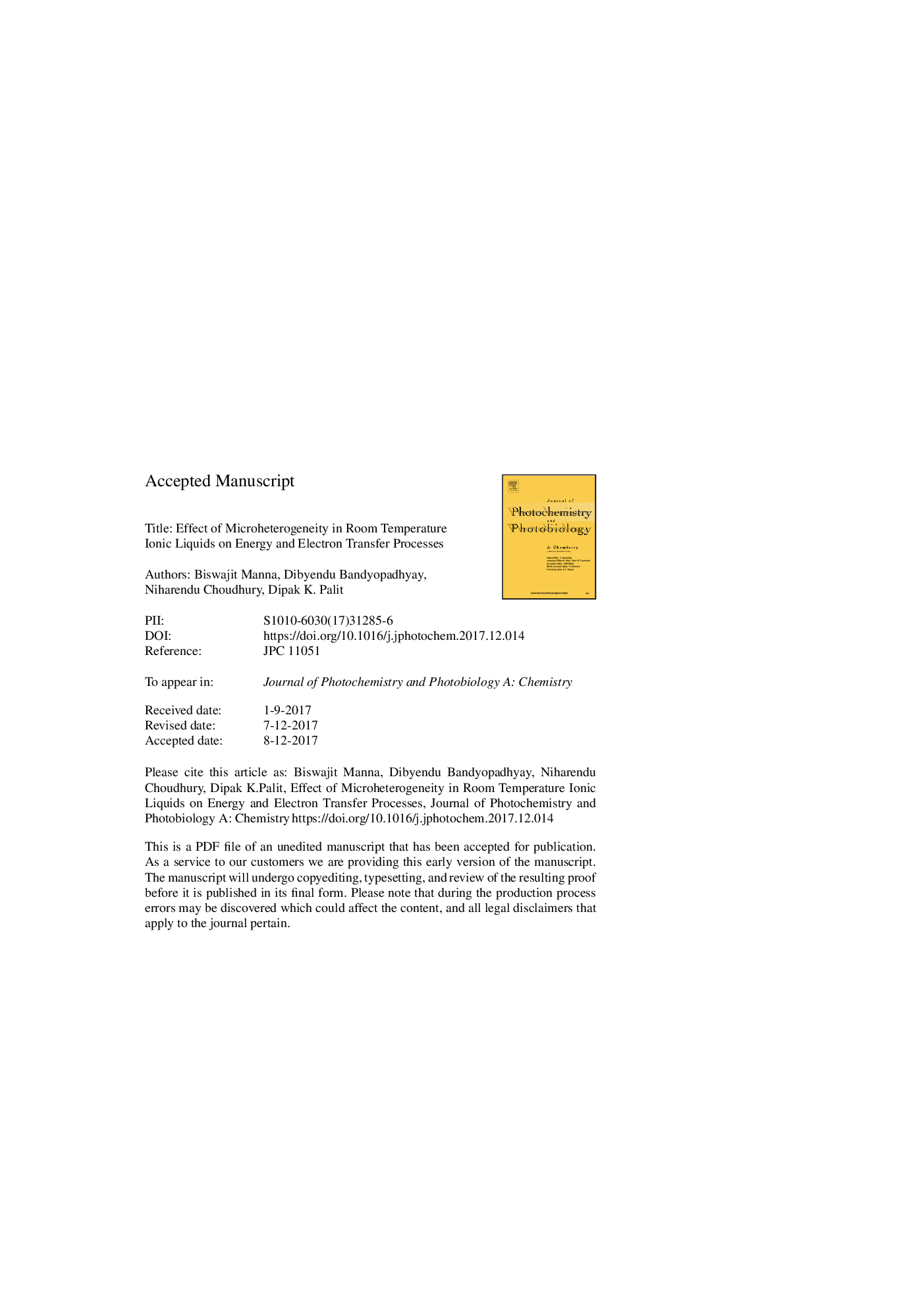| Article ID | Journal | Published Year | Pages | File Type |
|---|---|---|---|---|
| 6492637 | Journal of Photochemistry and Photobiology A: Chemistry | 2018 | 33 Pages |
Abstract
Triplet â triplet energy transfer (TET) and electron transfer (ET) processes involving a few long-lived (lifetime of about a few microsecond) triplet states as energy donors and radical anions as electron donors, respectively, have been investigated here in a series of 1-alkyl-3-methyl-imidazolium cation based ionic liquids, SDS micelle as well as in a few conventional solvents. Long lifetimes of the transient donors ensure occurrence of these processes in the 'stationary quenching regime' even in highly viscous RTIL solvents. Results of our molecular dynamic simulations reveal that self-organization of the RTIL solvent molecules, which creates nonionic and ionic pockets in RTIL, becomes more significant as the alkyl chain length increases. In the cases, where both the reactants are neutral molecules, which prefer to stay inside the nonionic or nonpolar pockets, the diffusive motion of the reactants experiences much smaller microscopic viscosity as compared to the bulk or macroscopic viscosity of the solution. However, if one of two reactants is ionic and the other is nonionic, they reside at ionic and nonionic pockets of the RTIL solution, respectively, and the motion of the reactants occur through different regions of the RTIL solution. Therefore, the reactants experience the macroscopic viscosity of the solution and the reaction rates show a linear relationship with inverse of viscosity of the solution (Smoluchowski equation). Present study clearly establishes the inherent microscopic heterogeneities in room temperature ionic liquids (RTILs), which have been the subject of intense discussion in recent times.
Related Topics
Physical Sciences and Engineering
Chemical Engineering
Bioengineering
Authors
Biswajit Manna, Dibyendu Bandyopadhyay, Niharendu Choudhury, Dipak K. Palit,
